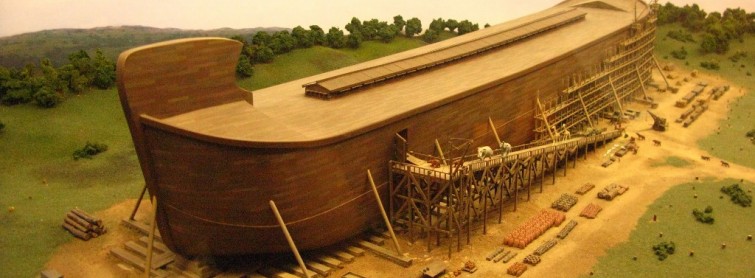Ask any man, woman or child who is even vaguely familiar with the story of Noah’s Ark how many of each animal was taken on board the Biblical boat and you will get the usual answer: two. This answer is usually given because of the instructions recorded in Genesis, which God gave to Noah:
You are to bring into the ark two of all living creatures, male and female, to keep them alive with you. Two of every kind of bird, of every kind of animal and of every kind of creature that moves along the ground will come to you to be kept alive.
– Gen 6:19-20
However, what most people don’t know is that later on in Genesis, God also gave Noah these instructions:
Take with you seven pairs of every kind of clean animal, a male and its mate, and one pair of every kind of unclean animal, a male and its mate, and also seven pairs of every kind of bird, male and female, to keep their various kinds alive throughout the earth.
– Gen 7:2-3
This discrepancy between texts, begs the question:
How many animals was Noah to take onto the ark? Was it two….or seven?
At a glance, these two passages appear to offer contradictory information.
The Documentary Hypothesis
One manner used by Biblical scholars to resolve this apparent issue is the documentary hypothesis. The documentary hypothesis maintains that the Old Testament was put together from multiple sources which wrote independent of each other. According to this theory, an editor – or multiple editors – came along and fitted the texts together into one narrative which could explain any contradictions or duplicate material in the Biblical text (a noticeable duplicate often cited to support the documentary hypothesis is the two human creation stories which appear in Genesis 1 and 2). Biblical scholars who subscribe to the documentary hypothesis argue that God’s command to bring seven pairs of clean animals was a later addition to the original story in order to explain how Noah was able to sacrifice animals after the flood without risking the animal population’s future.
A Close Reading
While the documentary hypothesis may provide an explanation for the discrepancy in the two passages, the inconsistency may also be able to be resolved by a careful reading of what the verse says.
The first passage states that Noah is “to bring into the ark two of all living creatures.” Here, God is instructing Noah to bring one pair of every living creature with him – every kind of animal on earth. This instruction is delivered with the specification that each pair be made up of one male and one female in order for each pair to repopulate the earth after the flood. The command here is universal: it concerns all animal life.
The second passage states that Noah is to bring “seven pairs of every kind of clean animal.” The distinction between the two passages is clear – the second instruction is bound up with the idea of ‘clean’ and ‘unclean’ animals. In this passage God instructs Noah to bring extra pairs of ‘clean’ animals. The command here is specific, referring only to ‘clean’ animals. This passage also confirms the instructions given in the first passage, stating that seven pairs of clean animals need to come aboard the ark, in addition to the one pair of unclean animals that has already been commanded.
The two passages differ because the second one is a command given in addition to the first passage – while the first instruction concerns all animals, ensuring that the pairs taken on board will repopulate the earth, the second instruction concerns only clean animals and is probably referring to animals for sacrificial purposes. This is indicated by the sacrifice Noah makes immediately after the flood:
“ So Noah came out, together with his sons and his wife and his sons’ wives…Then Noah built an altar to the Lord and, taking some of all the clean animals and clean birds, he sacrificed burnt offerings on it.”
– Gen 8:18-20
If Noah took only the reproductive pairs then he would not have had any available animals to sacrifice. God knew this, and so gave a further instruction to ensure that all needs would be met.
Conclusion
What we have here is not a contradiction – it is two different instructions given by God, to Noah, regarding the animals that needed to survive the flood.
Each instruction has its own purpose – one reproductive, one sacrificial – and is given for its own reasons. God supplemented his original instructions to ensure that clean animals were brought onto the ark for the purpose of sacrifice.
To subscribe to our mailing list sign up HERE

